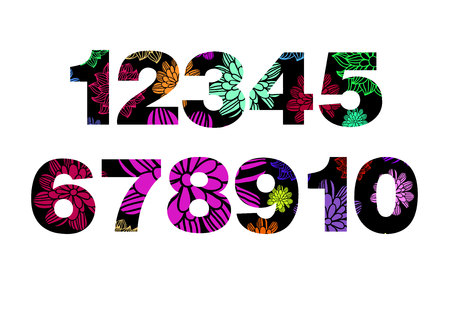1. Introduction: The Short Life Line Stigma
Have you ever glanced at your palm and worried about the length of your life line? If so, youre not alone. In American culture, theres a widespread belief that a short life line means you’ll have a short life—or worse, that it’s some kind of death sentence. This myth causes a lot of unnecessary anxiety for people who are simply curious or concerned about what their hands might say about their future.
The roots of this palmistry idea can be traced back to ancient traditions, but it gained popularity in the United States during the 20th century as palm reading became a staple at fairs, carnivals, and even in pop culture. Movies and TV shows often depict palm readers warning characters based on the lines on their hands, especially focusing on the infamous “life line.”
Why Do People Worry About Their Life Line?
| Reason | Description |
|---|---|
| Pop Culture Influence | Movies and books often dramatize palm readings, making the life line seem more important than it is. |
| Lack of Knowledge | Most people don’t know that palmistry isn’t an exact science, leading to misunderstandings. |
| Human Curiosity & Fear | It’s natural to be curious—and sometimes fearful—about our futures and lifespans. |
The Origins of the Short Life Line Myth
Palmistry has been practiced for thousands of years across various cultures, but in America, the focus on the life line took off with the rise of fortune-telling entertainment. Early American palmists brought interpretations from Europe and Asia, where the life line was sometimes linked to vitality rather than actual lifespan. Over time, these ideas blended with local superstitions and fears about mortality, creating a unique American anxiety around this single crease in the hand.
Common Misconceptions About Short Life Lines
- A short life line always means a short life span.
- Your fate is set in stone based on your hand lines.
- A broken or faint life line signals danger or early death.
Understanding where these beliefs come from can help us break free from unnecessary worry. As we continue exploring hand line interpretations, remember that your future isn’t written on your palm—and there’s much more to your story than just one line!
2. What the Life Line REALLY Means
If you’ve ever glanced at your palm and worried that a short life line means you’re destined for a short life, you’re not alone! This is one of the biggest myths in hand reading—especially in pop culture and movies. Let’s set the record straight: the life line on your hand has nothing to do with how many years you’ll live.
Debunking the Lifespan Myth
Many people believe that a long, deep life line guarantees a long life, while a short or faint line spells doom. In reality, palmistry experts agree this just isn’t true. The length or shape of your life line does not predict when or how you will die.
So What Does the Life Line Actually Tell Us?
The life line is more about your energy, vitality, and how you handle change—not your expiration date! Here’s what hand readers really look for:
| Life Line Feature | What It Indicates |
|---|---|
| Length | How much physical energy and stamina you generally have (not lifespan!) |
| Depth | Strength of vitality; a deeper line suggests strong resilience, while a lighter one could mean sensitivity to stress |
| Curvature | A wide curve points to adventurousness and openness to new experiences; a straighter line may suggest caution |
| Breaks or Branches | Major life changes, turning points, or moments of transformation—not danger! |
Your Life Story, Not Your Lifespan
The life line is like a personal map showing how you respond to challenges and adapt as life unfolds. Everyone’s hands are different, just like everyone’s journey is unique. So next time someone comments on the lines in your palm, remember: it’s about your spirit and resilience—not your time left on Earth!

3. Cultural Misconceptions and American Superstitions
When it comes to palmistry, or hand reading, many Americans have picked up ideas that aren’t quite accurate. The belief that a short life line means a short life is just one example. In fact, cultural misunderstandings and popular media have played a big role in shaping these myths. Let’s break down some of the most common misconceptions and see where they come from.
Common American Misconceptions About Palmistry
| Misconception | Reality |
|---|---|
| A short life line means you’ll die young. | The length of your life line doesn’t predict your lifespan. It can reflect energy levels or lifestyle changes instead. |
| Palmistry is always about telling the future. | Palm reading often focuses on personality traits and potential, not strict fortune-telling. |
| All palm readers are “psychics.” | Many people who read hands use it as a tool for self-reflection, not psychic prediction. |
| Palmistry is only for entertainment at fairs or carnivals. | While fun at events, palmistry also has roots in ancient traditions and personal growth practices. |
How Media and Pop Culture Shape Beliefs
Movies, TV shows, and even cartoons in America often show palm readers as mysterious fortune-tellers with crystal balls and dark rooms. This image makes people think hand readings are all about predicting death or disaster—especially if someone has a “short” line on their palm. In reality, professional hand analysts look at many factors and don’t make dramatic predictions.
Examples From Pop Culture
- Hollywood Movies: Films often dramatize palm readings, focusing on suspenseful moments like a character being told they have a “short life.”
- TV Shows: Sitcoms might use palmistry as a joke or plot twist, reinforcing the idea that it’s not serious or scientific.
- Social Media: Viral posts and memes spread misinformation quickly, sometimes making people worry about what their lines really mean.
The Real Purpose of Life Lines in Palmistry
Instead of predicting exact lifespans, a skilled palm reader in America will help you explore your strengths, challenges, and energy patterns. The shape, depth, and curve of your life line tell more about your approach to life than how long you’ll live. So next time you hear someone mention a “death sentence” from a short life line, remember—it’s just another myth shaped by culture and media!
4. Short Life Lines in Context: Stories and Perspectives
When it comes to palm reading, one of the most common myths is that a short life line means a short life. In reality, many people with short life lines enjoy long, fulfilling lives. Let’s look at some real-life stories and Western viewpoints that challenge this age-old belief.
Real-Life Anecdotes: Living Proof
Meet Sarah from Texas. She grew up hearing that her short life line was bad news. But today, she’s 78 years old and still volunteering at her local animal shelter. Then there’s Mike from California—his palm reader predicted he wouldn’t live past 40, but he just celebrated his 65th birthday with a mountain hike! These stories are not rare; many Americans have similar experiences that prove a short life line does not equal a short life.
Comparing Palm Line Beliefs vs Reality
| Belief | Reality | Example |
|---|---|---|
| Short life line = Short life | No link to lifespan | Sarah (age 78) with a short life line |
| Long life line = Guaranteed longevity | Other factors influence health and age | Mike (age 65) living strong despite predictions |
| Certain lines predict fate | Lifestyle and choices matter more | People thriving against all odds |
Western Perspectives on Palm Reading Myths
In the U.S., palmistry is often seen as entertainment rather than science. Many Americans approach it with curiosity but don’t let it dictate their lives. Modern Western culture values personal agency—the idea that your choices, habits, and attitude shape your destiny far more than the lines on your hand.
Cultural Attitudes Toward Fate vs Free Will
| Palm Reading Approach | Cultural Viewpoint in the U.S. |
|---|---|
| Your hand reveals your fate. | You create your own future through actions. |
| A short line limits you. | You can break the mold and write your own story. |
| Palm lines are unchangeable destiny. | Lifestyle changes can impact health and happiness. |
The next time someone points out your short life line, remember these stories and perspectives. In American culture, living boldly and making your own path matters far more than any myth written in your palm.
5. The Takeaway: Beyond Myths to Personal Empowerment
When it comes to palmistry, especially the life line, there are a lot of myths floating around. One of the biggest misconceptions is that a short life line means a short life or impending doom. But lets set the record straight: your hand doesnt hold a death sentence!
Understanding the Life Line in Modern Palmistry
The life line is often misunderstood. In modern palmistry—especially here in the United States—the focus has shifted from superstition to self-awareness. Instead of predicting your fate, the lines on your palm can reflect aspects of your energy, vitality, and experiences. They are not crystal balls; they are more like personal roadmaps.
Myth vs. Reality: Life Line Interpretations
| Myth | Reality |
|---|---|
| A short life line means a short life. | Length has nothing to do with lifespan; its more about energy or lifestyle changes. |
| Breaks in the line signal disaster. | Breaks can indicate periods of change or transformation, not tragedy. |
| The deeper the line, the healthier you are. | Line depth can suggest intensity, but health is influenced by many factors outside your palm. |
Empowering Yourself Through Hand Analysis
Palmistry in todays world is all about self-discovery—not fear. When you look at your hands, think of them as tools for self-reflection. Here are some ways to use palmistry in a positive, empowering way:
- Focus on growth: Notice how your lines may change over time as you grow and make new choices.
- Embrace uniqueness: No two hands are exactly alike. Your lines tell your unique story.
- Let go of fear: Use palmistry as a way to understand yourself better, not as something to worry about.
- Ask questions: If youre curious about what your lines might mean, talk to a reputable reader who uses a modern approach—one that focuses on empowerment and insight rather than superstition.
Palmistry for Self-Understanding, Not Prediction
Remember, your hand lines are just one part of who you are. They dont decide your fate or limit your potential. Instead, they offer another way to explore your personality, strengths, and life journey. By moving past old superstitions and embracing a modern mindset, you can use palmistry as a tool for personal growth and empowerment—rooted in curiosity and self-understanding rather than fear.


